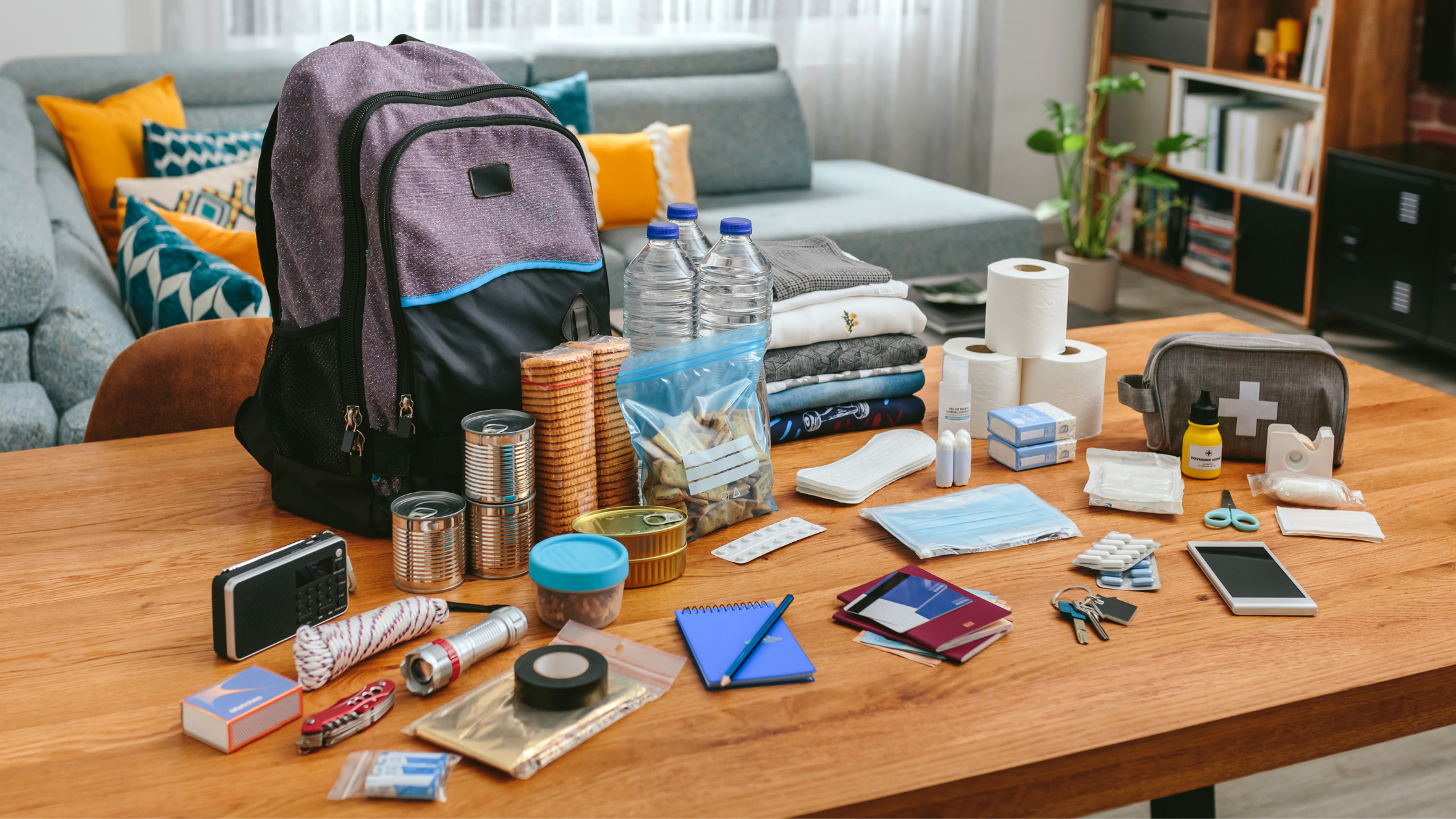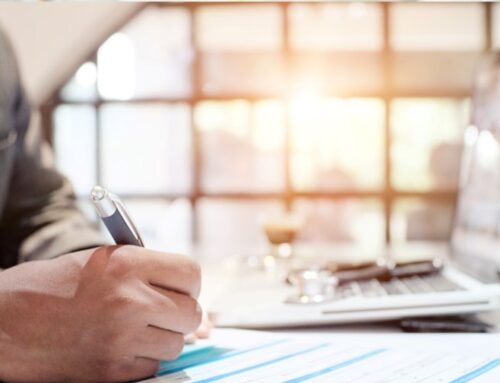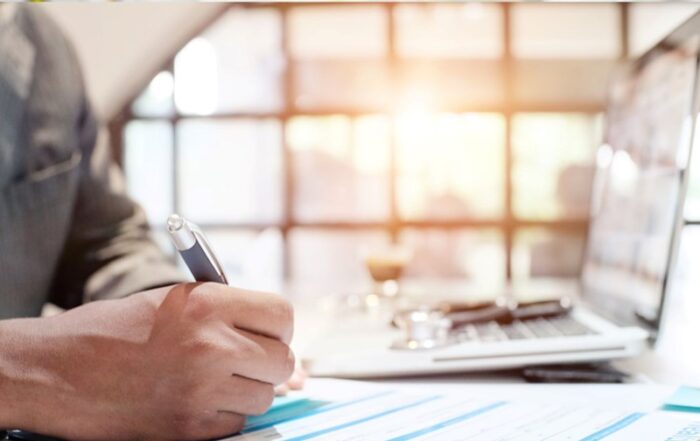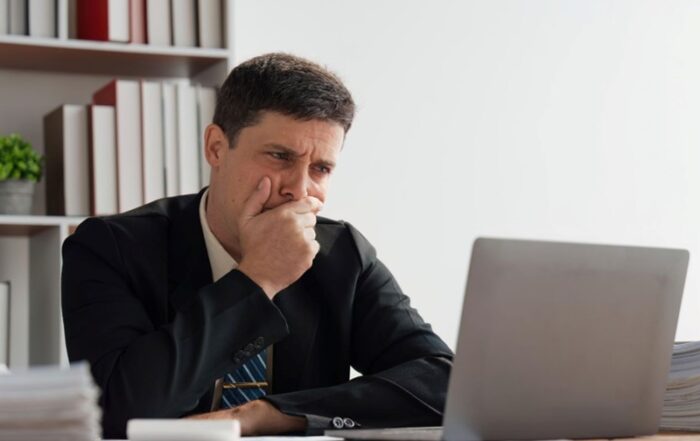Be Prepared with an Emergency Safety Kit
Everyone should have some basic supplies on hand in order to survive for at least three days if an emergency or disaster occurs. This article discusses some basic items that every emergency supply kit should include; however, it is important that you also consider the unique needs of your family in order to create an emergency supply kit that will meet those needs. Ideally, you should maintain at least two emergency supply kits: one full kit at home and smaller portable kits in your vehicle or at your workplace, or other places you spend time.
A basic home emergency supply kit could include the following items:
- Water—four litres of water per person per day for at least three days, for drinking and sanitation
- Food—at least a three-day supply of non-perishable food
- Battery-powered or hand crank radio and a Weatheradio receiver with tone alert, and extra batteries for both
- Flashlight and extra batteries
- First-aid kit
- Whistle to signal for help
- Dust mask to help filter contaminated air, and plastic sheeting and duct tape for sheltering in place
- Moist towelettes, garbage bags and plastic ties for personal sanitation
- Wrench or pliers to turn off utilities
- Manual can opener for food
- Cellphone with charger and inverter
Water
Water is an essential element for survival and a necessary item in an emergency supply kit. Following a disaster, clean drinking water may not be available. Your regular water source could be cut off or compromised through contamination. Prepare yourself by building a supply of water that will meet your family’s needs during an emergency.
How Much Water Do I Need?
You should store at least four liters of water per person per day. A normally active person needs at least four liters of water daily just for drinking; however, individual needs vary, depending on age, physical condition, activity, diet, and climate.
To determine your water needs, take the following into account:
- Children, nursing mothers and sick people may need more water.
- A medical emergency might require additional water.
- During warm weather, more water may be necessary. In very hot temperatures, water needs can double.
- Keep at least a three-day supply of water per person.
How Should I Store Water?
It is recommended that you purchase commercially bottled water in order to prepare the safest and most reliable emergency water supply. Keep bottled water in its original container and do not open until you need to use it. Observe the expiration or “use by” date. Keep the water stored in a cool, dark place.
First-aid Kit
Knowing how to treat minor injuries can make a difference in an emergency. You may consider taking a first aid class, but simply having the following items can help you stop bleeding, prevent infection and assist in decontamination.
- Two pairs of latex gloves, or other sterile gloves if you are allergic to latex
- Sterile dressings to stop bleeding
- Cleansing agent/soap and antibiotic towelettes
- Antibiotic ointment
- Burn ointment
- Adhesive bandages in a variety of sizes
- Eye wash solution to flush the eyes or as a general decontaminant
- Thermometer
- Prescription medications you take every day, such as insulin, heart medicine and asthma inhalers. You should periodically rotate medicines to account for expiration dates.
- Prescribed medical supplies, such as glucose and blood pressure monitoring equipment and supplies
Non-prescription Drugs
- Aspirin or non-aspirin pain reliever
- Anti-diarrhea medication
- Antacid
- Laxative
Other First Aid Supplies
- Scissors
- Tweezers
- Tube of petroleum jelly or other lubricants
Supplies for Unique Needs
Consider the unique needs of your family members, including growing children, when building your emergency supply kit.
For Baby
- Formula
- Diapers
- Bottles
- Powdered milk
- Medications
- Moist towelettes
- Diaper rash ointment
For Adults
- Denture needs
- Contact lenses and supplies
- Extra eyeglasses
Ask your doctor about storing prescription medications such as heart and high blood pressure medication, insulin and other prescription drugs.
Cold Weather
During cold weather, you must think about warmth. It is possible that you will not have heat. Think about your clothing and bedding supplies. Be sure to include one complete change of clothing and shoes per person, including:
- Jacket or coat
- Long pants
- Long-sleeved shirt
Vehicle
In case you are stranded, keep a kit of emergency supplies in your car. This kit should include:
- Jumper cables
- Flashlights and extra batteries
- First aid kit and necessary medications in case you are away from home for a prolonged time
- Food items containing protein, such as nuts and energy bars; also canned fruit and a portable can opener
- Water for each person and pet in your car
- AM/FM radio to listen to traffic reports and emergency messages
- Cat litter or sand for better tire traction
- Shovel
- Ice scraper
- Warm clothes, gloves, hat, sturdy boots, jacket and an extra change of clothes
- Blankets or sleeping bags
Also consider:
- A fully-charged cellphone and phone charger
- Flares or reflective triangle
- Baby formula and diapers if you have a small child
Maintaining Your Kit
Just as important as putting your supplies together is maintaining them so they are safe to use when needed. Here are some tips to keep your supplies ready and in good condition:
- Keep canned food in a cool, dry place.
- Store boxed food in tightly closed plastic or metal containers to protect it from pests and to extend its shelf life.
- Throw out any canned item that becomes swollen, dented or corroded.
- Use foods before they go bad and replace them with fresh supplies.
- Place new items at the back of the storage area and older ones in the front.
- Change stored food and water supplies every six months. Be sure to write the date you store it on all containers.
- Re-think your needs every year and update your kit as your family’s needs change.
Keep items in airtight plastic bags and put your entire disaster supply kit in one or two easy-to-carry containers, such as an unused trash can, camping backpack or duffel bag.
Additional Emergency Supplies
Once you have gathered the supplies for a basic emergency kit, you may want to consider adding the following items:
- Prescription medications and glasses
- Infant formula and diapers
- Pet food and extra water for your pet
- Cash or traveler’s cheques and change
- Important family documents such as copies of insurance policies, identification and bank account records in a waterproof, portable container
- Sleeping bag or warm blanket for each person. Consider additional bedding if you live in a cold-weather climate.
- Complete change of clothing including a long sleeved shirt, long pants and sturdy shoes. Consider additional clothing if you live in a cold-weather climate.
- Household chlorine bleach and medicine dropper. When diluted at nine parts water to one part bleach, it can be used as a disinfectant. Or, in an emergency, you can use it to treat water by using 16 drops of regular household liquid bleach per four litres of water. Do not use bleach that is scented or colour safe, or that has added cleaners.
- Fire extinguisher
- Matches in a waterproof container
- Feminine supplies and personal hygiene items
- Mess kits, paper cups, plates, paper towels and plastic utensils
- Paper and pencil
- Books, games, puzzles or other activities for children
Be prepared for an emergency by keeping your gas tank full. If you find yourself stranded, be safe and stay in your car, put on your flashers, call for help and wait until it arrives.
Munn Insurance is committed to helping you and your loved ones stay safe when disaster strikes. If you would like more information on developing a family emergency plan or building a disaster supply kit, please contact us at 1-855-726-8627 today.
Related News
Recent News
Decoding Commercial Insurance: 20 Essential Terms for Small to Medium-Sized Business Owners
Navigating the world of commercial insurance can be overwhelming, but understanding key terms is crucial for safeguarding your small to medium-sized business. Here are 20 essential terms explained in plain language: General Liability: Coverage protecting [...]
Top 10 Questions to Ask Your Broker Before Buying Insurance for Your Small Business
When purchasing insurance for your small business, it's crucial to ask your insurance broker the right questions to ensure you make informed decisions. Here are the top 10 questions to ask: 1. What Types of [...]
Knowing When to Switch: Finding the Right Insurance Broker for Your Property Portfolio
As a large business engaged in the construction, ownership, and management of numerous commercial properties and apartment buildings, ensuring robust insurance coverage is paramount. However, there may come a time when it's prudent to reassess [...]











